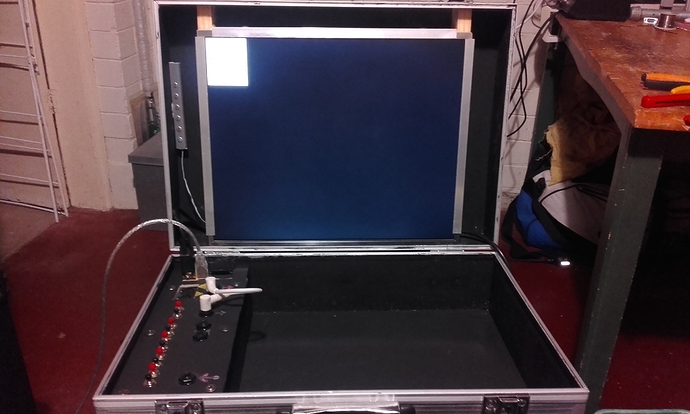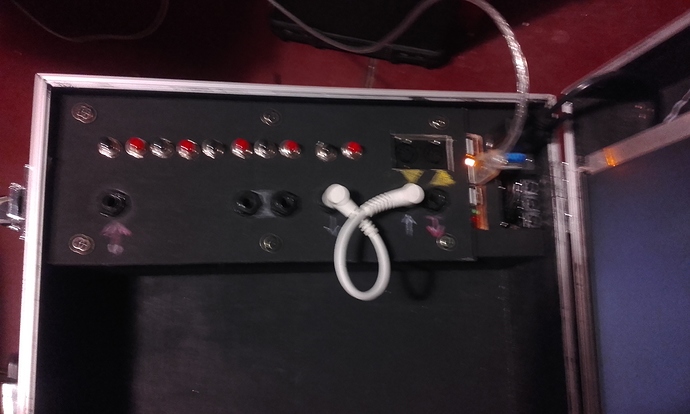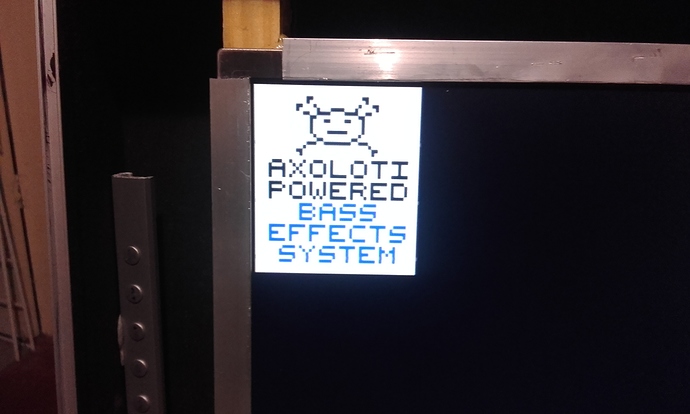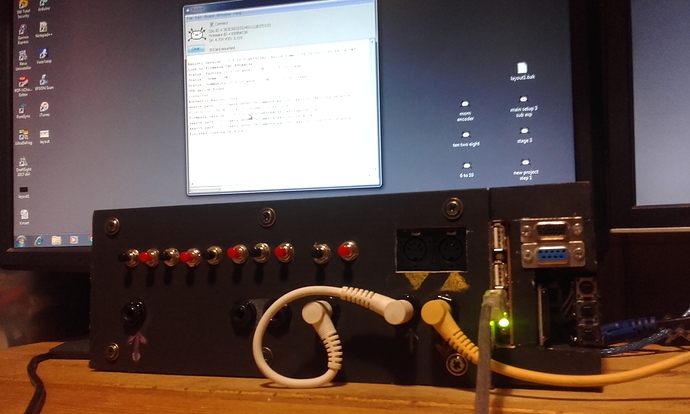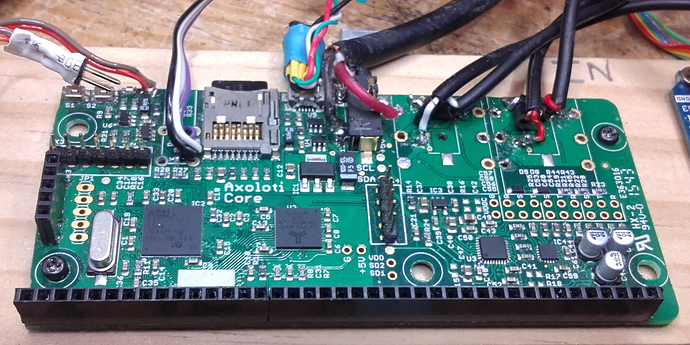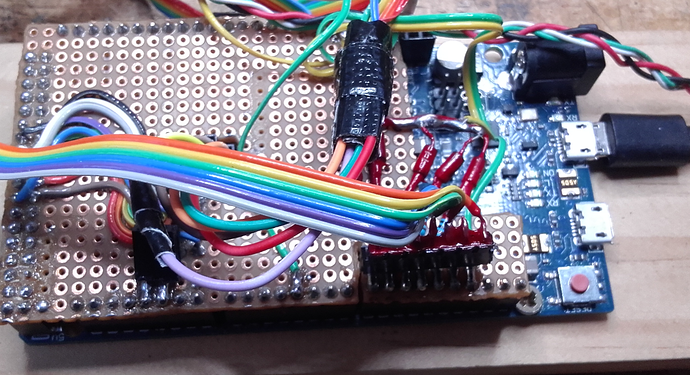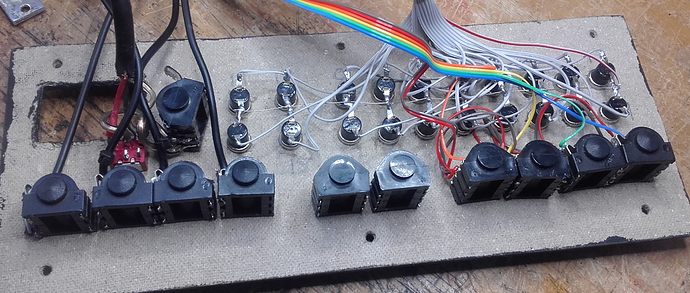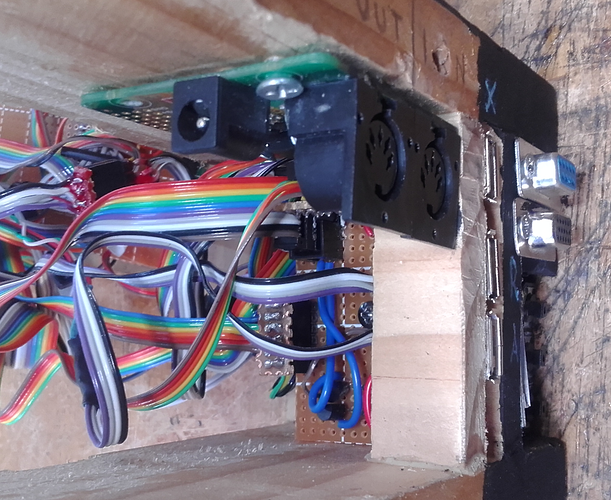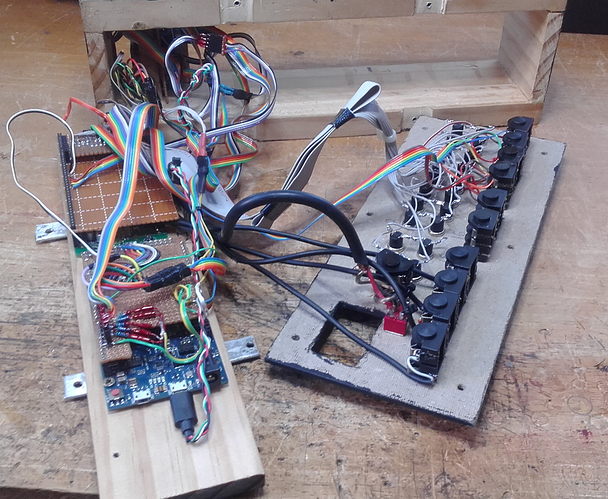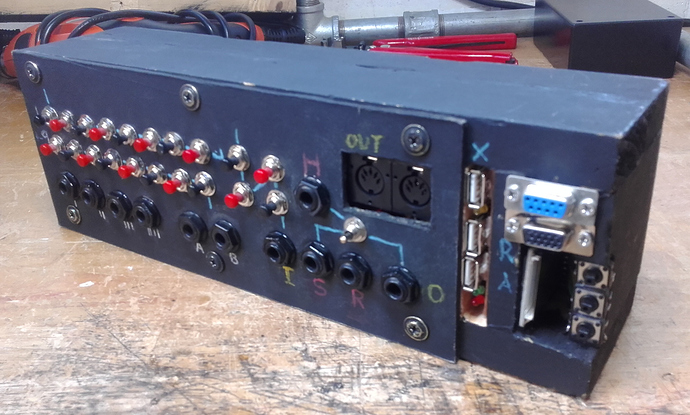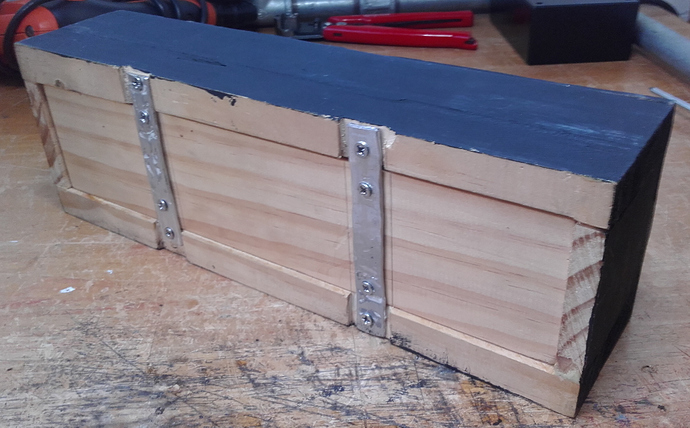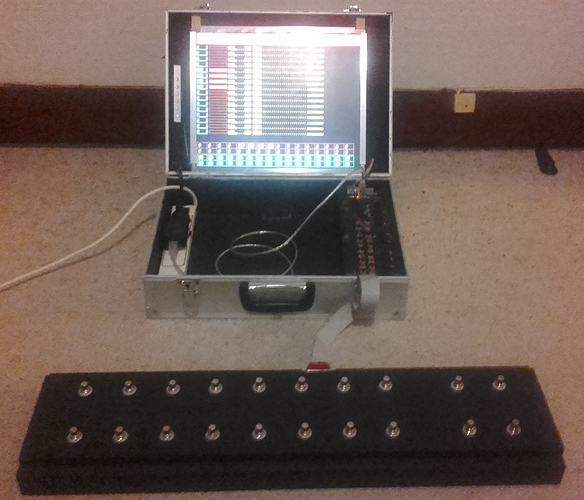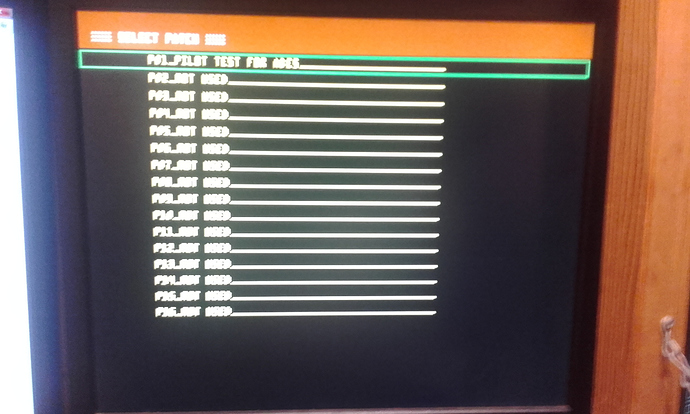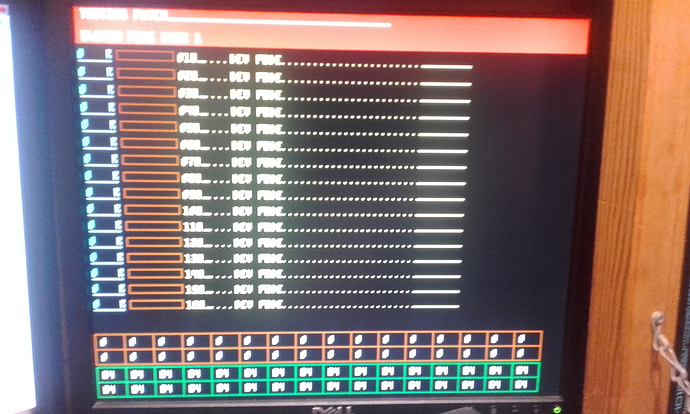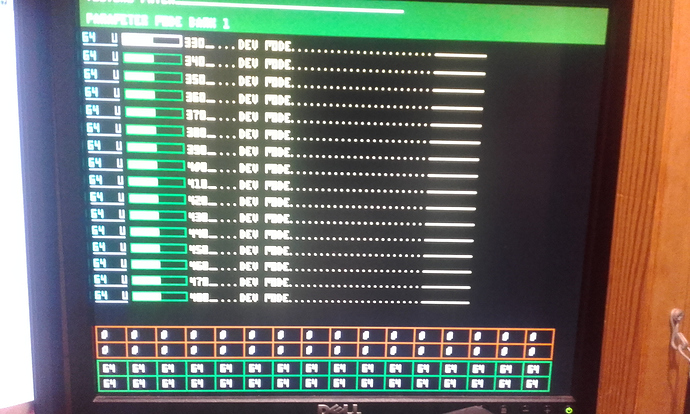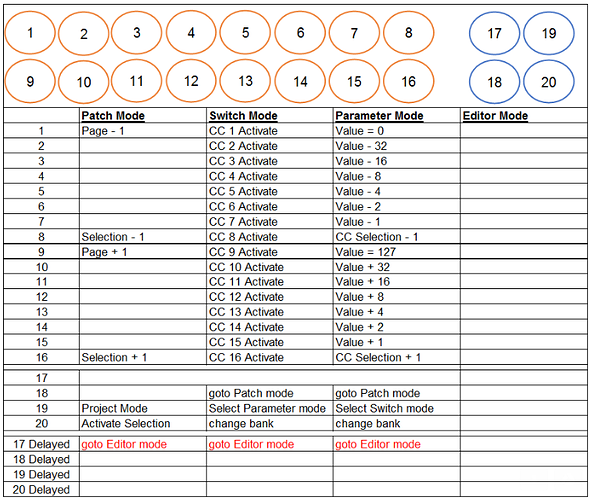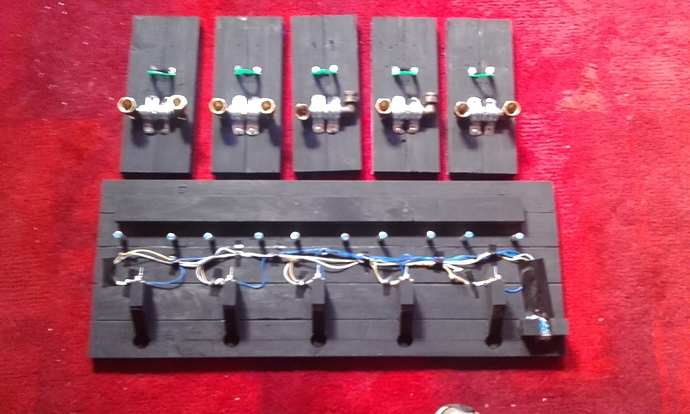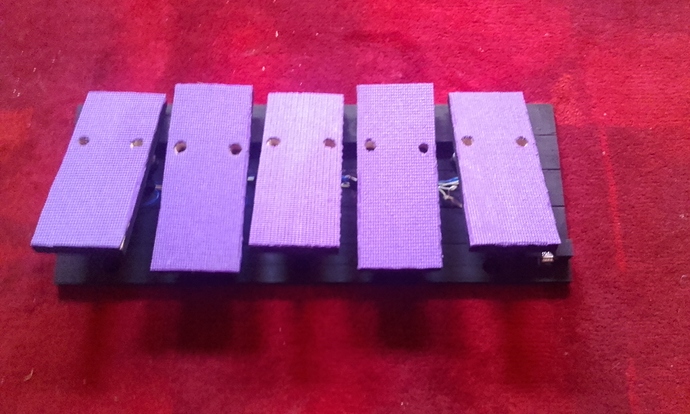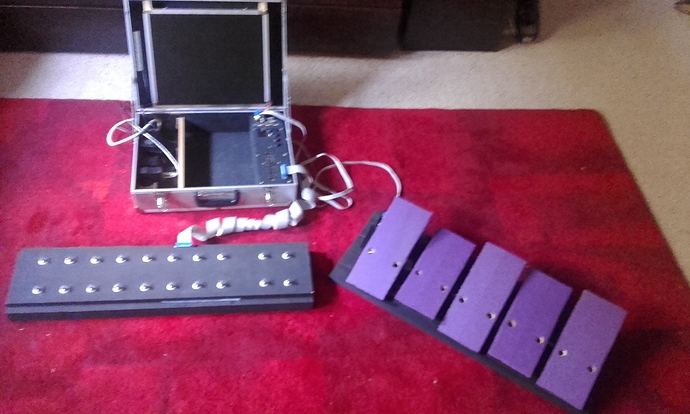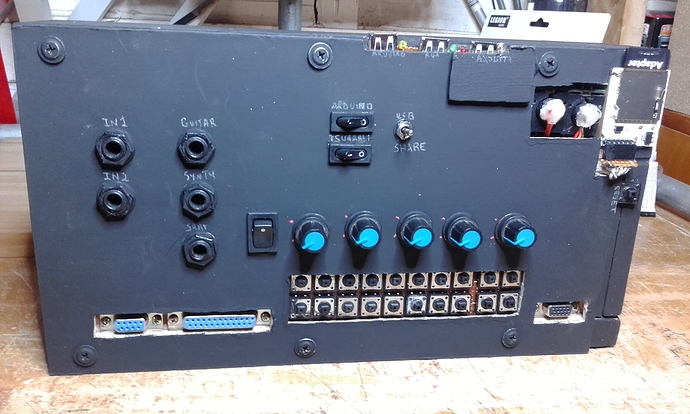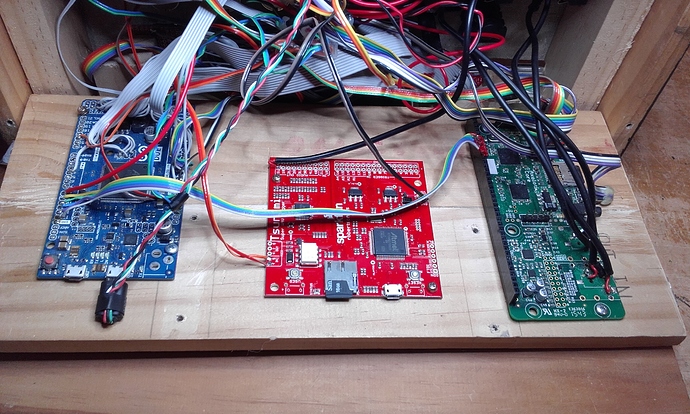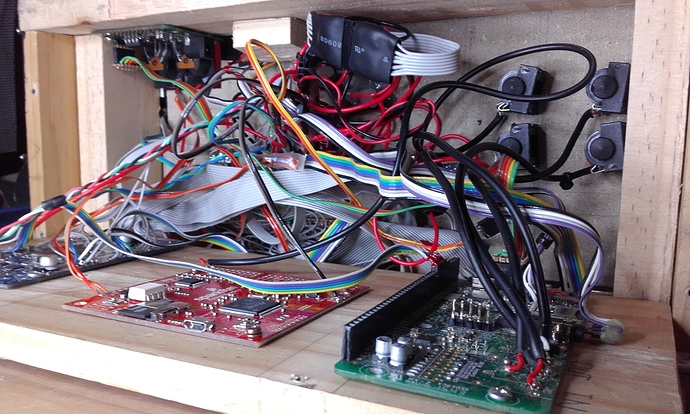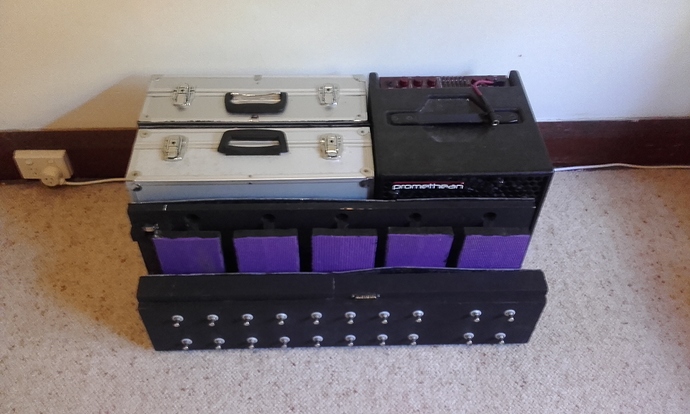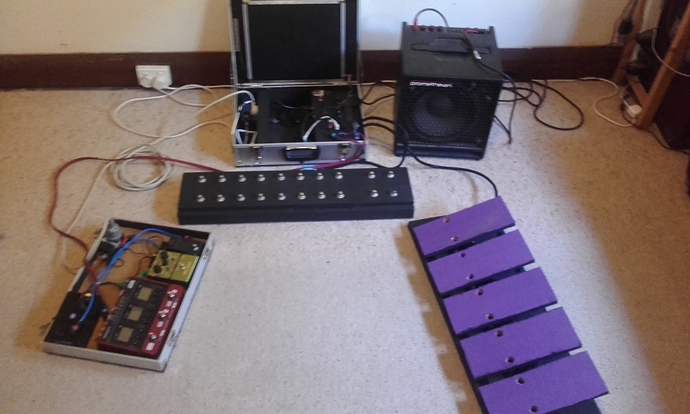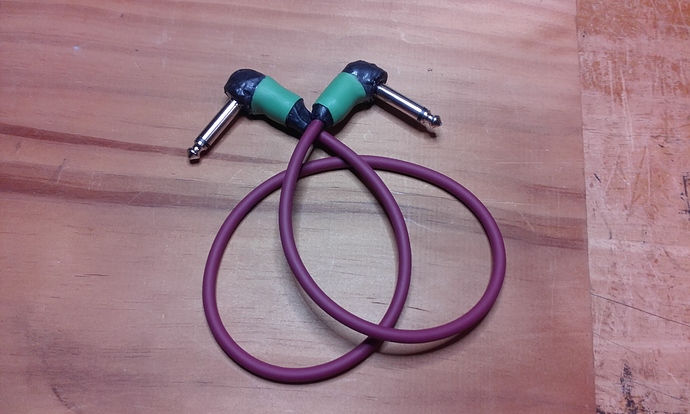Part one of my project can now be shared with the community,
The official system is taking shape.
My Requirements..
- All has to fit into a case.
- Display is via a VGA monitor.
- Axoloti Module must be detachable for desk top use.
- Axoloti module must require a hardware structure that can be used in any patch.
- Axoloti Module must be controlable from a foot pedal system and must be able to make all required adjustments to the patch when active.
Features..
Input/Output seperated into Input - Send - Return - Output.
8 momentary switches for active control within patches.
2 bank momentary switches with states 00,01,11,10 for 4 banks of 8 switches. The 8 switches can also be doubled up with there adjacent switch for an additional 7 momentary switches if required. This gives a total of 60 momentary switches per patch if required.
The 2 bank switches also double as mode switches when held for period of time. This will changes the switches from momentary switches in the patch to adjustable parameters either Polar or Bipolar depending on the need. 6 of the switches provides an increment decrement option of +16, -16, +4, -4, +1, -1, the other 2 switches allows me to select the parameter to adjust between 1 and 32.
Still to do..
The footswitching unit is mostly complete, some of the switches were busted so need to order some new ones.
Need to finalize how the patches will be setup, so will require a template patch so all the controlling is the same, everythying is currently in smaller patch peices and needs to be brought together.
Need to finalize the display setup, how it will be displayed and change etc depending on adjustments and how description details will be shown and stored etc..
Some photo's, not the best..
In the case.
Axoloti Module.
Little VGA taste with a pixelated Axoloti..
Axoloti Module on the desktop.
I can post some more photo's of any other details if you like.. !

